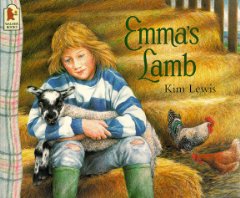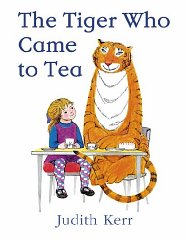Emma’s Lamb
Author: Lewis, Kim
Reading Age: 4 to 5 Junior Infants, 5 to 6 Senior Infants
Publisher: Walker Books Ltd
Illustrator: n/a
ISBN-13: 9780744520316
Number of pages: 32
From the Publisher
Recommended as part of the Building Bridges of Understanding for Infants to 2nd class to support children’s use of connections.
One rainy spring morning, Emma... Read more
€10.50 Original price was: €10.50.€9.50Current price is: €9.50.
Sorry, All sold out!

From the Publisher
Recommended as part of the Building Bridges of Understanding for Infants to 2nd class to support children’s use of connections.
One rainy spring morning, Emma’s father brings home a lost lamb; he’s wet and cold and hungry, but Emma will take care of him. It’s fun to feed the lamb and to play together, but Emma knows that she can’t look after the lamb forever. He must go back to his mother. This charming story, set in the breathtaking landscape of a working sheep farm, is sure to appeal to any child who has ever loved and cared for an animal.
Children’s Literature
Both the lamb and Emma are sweetly appealing in this quiet tale of a farm girl who realizes that a young animal is best raised by its own mother. This is an exquisite, nostalgic picture of rural life at its best in the British Isles: stone barns, rain-swept fields, and sheep aplenty. Lewis’ colored pencil illustrations show both great skill and in-depth knowledge of family farms, but mainly, they are just plain irresistible. 1998 (orig.
School Library Journal
PreS-Gr 2– Emma’s father brings home a lamb to keep it warm in the farm kitchen while he goes to look for its mother. Young Emma feeds and plays with it and nearly loses it when she plays hide-and-seek with it in the barn. While the simple text clearly relates the game, the animal’s disappearance, and the satisfying conclusion, it is the pictures that eloquently tell this story. Double-page spreads in delicate colors capture the realistic details of the old kitchen, stone buildings, and fences of an English farm. A plump gray tabby and her kittens appear in each picture, echoing the coloring of the lamb as well as the actions of the little girl. These scenes can be contrasted with Donald Carrick’s small pictures in night hues for Carol Carrick’s In the Moonlight, Waiting (Clarion, 1990), also about sheep. –Barbara Chatton, College of Education, University of Wyoming, Laramie









